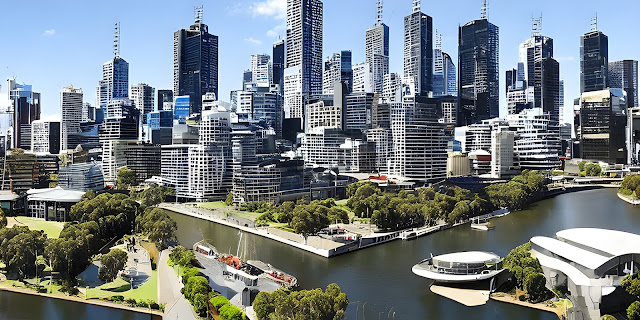Friday, 31 March 2023
RINGWOOD LAKE PARK
Thursday, 30 March 2023
BORAGE
Borage (Borago officinalis), also known as a starflower, is an annual herb. It is native to the Mediterranean region and has naturalised in many other locales. It grows satisfactorily in gardens in the UK climate, remaining in the garden from year to year by self-seeding. The leaves are edible and have a cucumber-like flavour. The plant is grown in kitchen-gardens for that purpose in some parts of Europe. The plant is also commercially cultivated for borage seed oil extracted from its seeds.
Borage is used in companion planting. It is said to protect or nurse legumes, spinach, brassicas, and even strawberries. It is also said to be a good companion plant to tomatoes because it confuses the search image of the mother moths of tomato hornworms or manduca looking for a place to lay their eggs.
Traditionally Borago officinalis is used in various disorders, such as gastrointestinal (colic, cramps, diarrhoea), airways (asthma, bronchitis), cardiovascular, (cardiotonic, antihypertensive and blood purifier), urinary (diuretic and kidney/bladder disorders). In Iran people make a tea for relieve colds, flu, bronchitis, rheumatoid arthritis, and kidney inflammation. It is said to be warm in nature and alleviates symptoms that are caused by using food that is cold in nature such as cucumber and fish. People with heart problems can benefit using the borage tea, since it promotes reaching more oxygen to the heart, that’s why one should use this herb in moderate amounts.
This post is part of the Floral Friday Fotos meme.
Wednesday, 29 March 2023
WEB
and also part of the My Corner of the World meme,
and also part of the Nature Notes meme.
Tuesday, 28 March 2023
CITY VIEW
Monday, 27 March 2023
AUTUMN MOSAIC
and also part of the Blue Monday meme,
and also part of the Seasons meme.
Sunday, 26 March 2023
BACKYARD GECKO
Saturday, 25 March 2023
Friday, 24 March 2023
Thursday, 23 March 2023
Wednesday, 22 March 2023
EQUINOX SUN
and also part of the My Corner of the World meme,
and also part of the Nature Notes meme.
Tuesday, 21 March 2023
INVERLOCH
Monday, 20 March 2023
MOSSYWOOD
This post is part of the Mosaic Monday meme,
and also part of the Blue Monday meme,
and also part of the Seasons meme.
Sunday, 19 March 2023
GENTLY...
...does the rain fall and softly does Summer exit, while Autumn still waits gingerly for its cue to take centre stage.
This post is part of the My Sunday Best meme
Saturday, 18 March 2023
Friday, 17 March 2023
Thursday, 16 March 2023
HAWKESBURY DAISY
Wednesday, 15 March 2023
AUTUMN LEAVES
This post is part of the Wordless Wednesday meme,
and also part of the My Corner of the World meme,
and also part of the Nature Notes meme.
Tuesday, 14 March 2023
MELBOURNE'S MOOMBA
and also part of the Ruby Tuesday meme.
Monday, 13 March 2023
AUTUMN APPROACHING
and also part of the Blue Monday meme,
and also part of the Seasons meme.
Sunday, 12 March 2023
Saturday, 11 March 2023
MAGPIE-LARK
Friday, 10 March 2023
Thursday, 9 March 2023
Wednesday, 8 March 2023
END OF SUMMER
and also part of the My Corner of the World meme,
and also part of the Nature Notes meme.
Tuesday, 7 March 2023
GIPPSLAND DAY-TRIP
Monday, 6 March 2023
CHANGE OF SEASON
and also part of the Blue Monday meme,
and also part of the Seasons meme.
Sunday, 5 March 2023
AT THE PARKLANDS
Saturday, 4 March 2023
SWALLOWTAIL
Friday, 3 March 2023
Thursday, 2 March 2023
OSTEOSPERMUM
Osteospermum the daisybushes is a genus of flowering plants belonging to the Calenduleae, one of the smaller tribes of the sunflower/daisy family Asteraceae. There are about 50 species, native to Africa, 35 species in southern Africa, and the southwestern Arabian Peninsula. They are half-hardy perennials or sub-shrubs. Therefore they do not survive outdoor wintry conditions, but there is still a wide range of hardiness.
Osteospermum are popular in cultivation, where they are frequently used in summer bedding schemes in parks and gardens. Numerous hybrids and cultivars have been grown with a wide range of tropical colours. Yellow cultivars tend to have a yellow center (sometimes off-white). Plants prefer a warm and sunny position and rich soil, although they tolerate poor soil, salt or drought well.
Modern cultivars flower continuously when watered and fertilised well, and dead-heading is not necessary, because they do not set seed easily. If planted in a container, soil should be prevented from drying out completely. If they do, the plants will go into "sleep mode" and survive the period of drought, but they will abort their flower buds and not easily come back into flower. Moreover, roots are relatively susceptible to rotting if watered too profusely after the dry period.
This post is part of the Floral Friday Fotos meme.
Wednesday, 1 March 2023
FUTURE MELBOURNE
and also part of the My Corner of the World meme,
and also part of the Nature Notes meme.


































